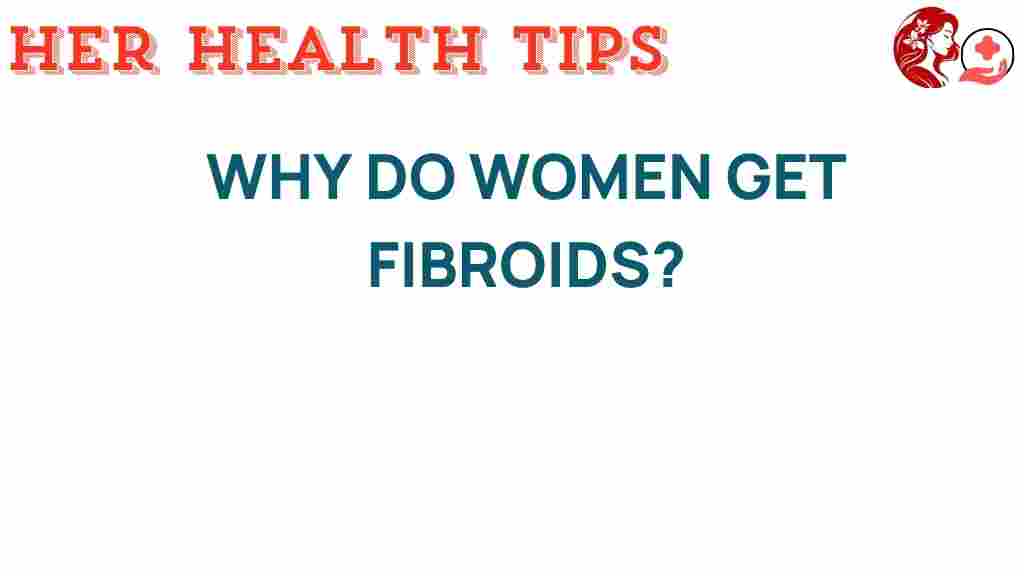Unraveling the Mystery: Why Do Women Get Fibroids?
Fibroids are non-cancerous growths that develop in or on the uterus, and they are quite common in women of reproductive age. Understanding fibroids is crucial for maintaining women’s health and uterine health. This article delves into the causes, symptoms, treatment, prevention, and the role of hormones in the development of fibroids. We will also explore recent research that sheds light on this condition.
What Are Fibroids?
Fibroids, also known as uterine leiomyomas or myomas, are muscular tumors that grow in the uterus. They can vary in size, from as small as a pea to larger than a grapefruit. Although they are generally benign, fibroids can cause various symptoms and complications, impacting women’s health significantly.
Causes of Fibroids
The exact cause of fibroids remains unclear, but several factors are believed to contribute to their development:
- Hormones: Estrogen and progesterone are two hormones that stimulate the growth of the uterine lining during the menstrual cycle. Fibroids contain more estrogen and progesterone receptors than normal uterine muscle cells, indicating that these hormones play a significant role in their growth.
- Genetic Factors: If a woman has a family history of fibroids, she may be at a higher risk of developing them herself. Certain genetic mutations have also been linked to fibroid development.
- Other Growth Factors: Substances in the body that help tissues grow may also affect fibroid growth. These include insulin-like growth factor (IGF) and other growth factors.
Symptoms of Fibroids
Many women with fibroids experience no symptoms at all. However, when symptoms do occur, they can include:
- Heavy menstrual bleeding or prolonged periods
- Painful periods (dysmenorrhea)
- Pelvic pain or pressure
- Frequent urination or difficulty emptying the bladder
- Constipation
- Backache or leg pain
If you experience any of these symptoms, it’s important to consult a healthcare provider for an accurate diagnosis and to discuss your options for treatment.
Diagnosis of Fibroids
Diagnosing fibroids typically involves a few steps:
- Medical History: A healthcare provider will take a detailed medical history and ask about symptoms.
- Pelvic Exam: A physical examination may reveal abnormalities in the size or shape of the uterus.
- Imaging Tests: Ultrasound, MRI, or CT scans can provide detailed images of the uterus and help identify fibroids.
Treatment Options for Fibroids
The treatment for fibroids depends on several factors, including the severity of symptoms, the size and location of the fibroids, and a woman’s desire for future pregnancies. Treatment options include:
- Watchful Waiting: If fibroids are asymptomatic, doctors may recommend monitoring them without immediate treatment.
- Medications: Hormonal treatments like birth control pills can help manage symptoms. GnRH agonists may also be prescribed to shrink fibroids temporarily.
- Minimally Invasive Procedures: These include uterine artery embolization, which cuts off the blood supply to fibroids, and myolysis, which destroys fibroids using laser, electricity, or freezing.
- Surgery: In severe cases, surgical options such as myomectomy (removal of fibroids) or hysterectomy (removal of the uterus) may be necessary.
Prevention of Fibroids
While there is no guaranteed way to prevent fibroids, some lifestyle changes may help reduce the risk:
- Maintain a Healthy Weight: Obesity is linked to a higher risk of fibroids. Regular exercise and a balanced diet can help manage weight.
- Dietary Choices: Some studies suggest that a diet rich in green vegetables, fruits, and whole grains may lower the risk of fibroids.
- Avoid High Blood Pressure: Managing blood pressure may also play a role in fibroid prevention.
Hormones and Fibroids
As mentioned earlier, hormones play a critical role in the growth of fibroids. Research indicates that:
- Estrogen levels fluctuate significantly during a woman’s life, particularly during reproductive years, which may explain the higher incidence of fibroids in this group.
- Fibroids often shrink after menopause when estrogen levels decrease, highlighting the relationship between hormonal changes and fibroid development.
Recent Research on Fibroids
Ongoing research continues to explore the complexities of fibroids, including:
- Genetic Studies: New studies are identifying specific genetic mutations associated with fibroid development, which could lead to targeted therapies.
- Hormonal Therapies: Research is ongoing to find effective hormonal treatments that can shrink fibroids without significant side effects.
- Alternative Treatments: Some studies are exploring the effectiveness of alternative therapies, such as acupuncture and herbal supplements, in managing fibroid symptoms.
For more detailed information on recent studies regarding fibroids, you can visit this research article.
Troubleshooting Tips for Managing Symptoms
If you are dealing with symptoms associated with fibroids, consider the following tips:
- Heat Therapy: Applying heat to the lower abdomen can help relieve pelvic pain.
- Over-the-Counter Pain Relief: Nonsteroidal anti-inflammatory drugs (NSAIDs) can help manage discomfort associated with heavy periods.
- Stress Management: Practices such as yoga and meditation can help reduce stress and improve overall well-being.
Conclusion
Understanding why women get fibroids is essential for promoting women’s health and uterine health. While the exact causes of fibroids are still being researched, factors such as hormones, genetics, and lifestyle choices play significant roles. Recognizing the symptoms of fibroids and seeking timely treatment can lead to better health outcomes for women. By staying informed and proactive, women can take charge of their health and well-being.
For more information on women’s health issues, including fibroids, visit our resource page.
This article is in the category Conditions and created by HerHealthTips Team
